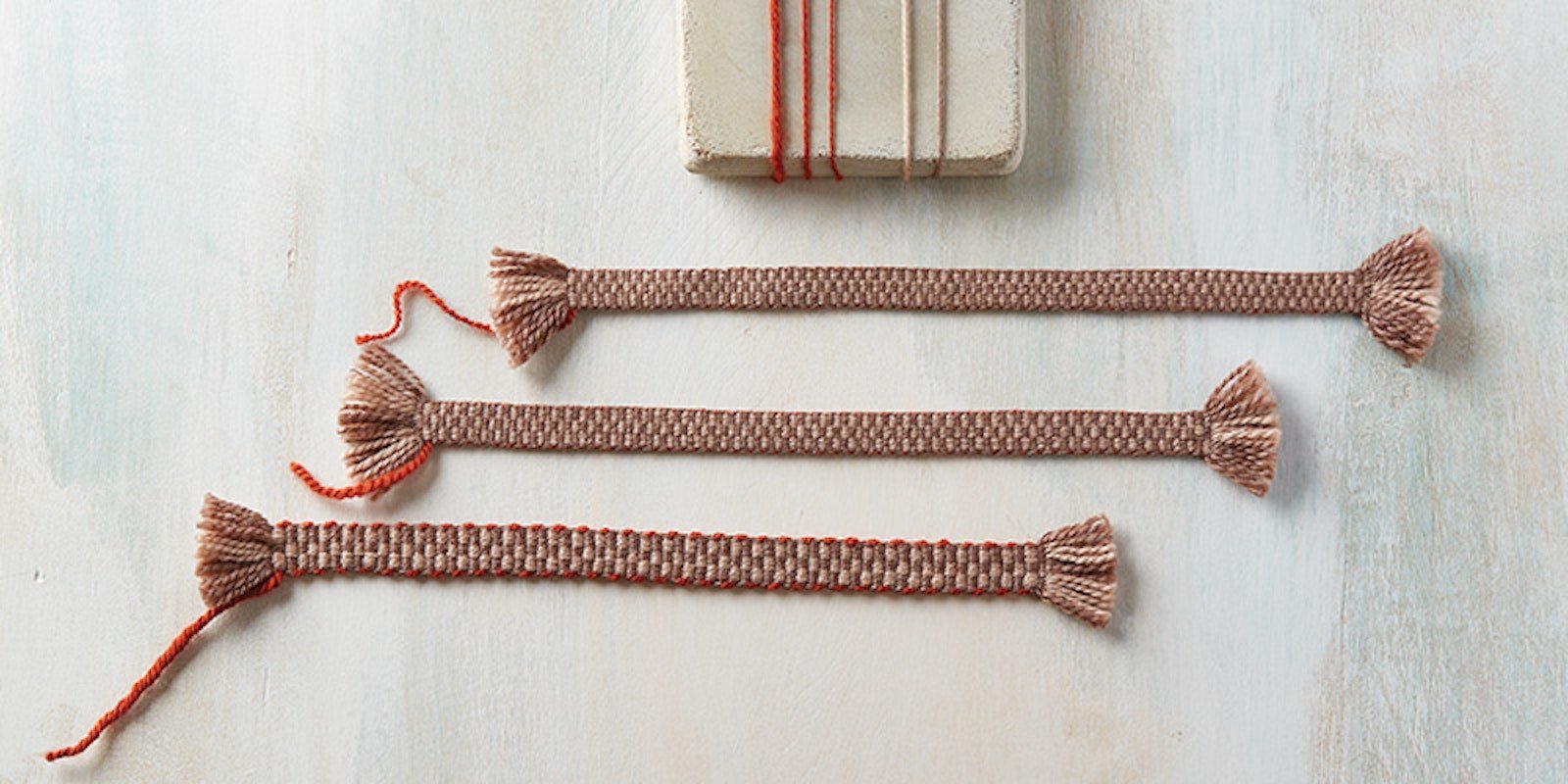In her post “Roving Reporter: Spinning for Bandweaving,” Kate Larson confesses that she’s smitten with weaving narrow tapes. The possibilities for yarn and weaving exploration are endless when spinning for bandweaving. In this excerpt from her article “Spinning for Warp-Faced Bands” from Spin Off Spring 2018, Kate offers 3 ways handspinners can use handspun yarn to enhance the designs of woven bands.
1. Add Twist in the Opposite Direction
We handspinners can make use of a surprising design element that some traditional bandweavers used to create surface texture: twist direction. The first time I noticed this was in poring over some of the older pickup bands in Vesterheim’s collection. Most are made with a mixed warp of millspun cotton or linen (spun Z and plied S) and handspun wool pattern threads (spun S and plied Z). The difference in twist direction makes the pattern threads stand out dramatically from the background. Nilda Callañaupa Alvarez mentions in her video Andean Spinning and book Secrets of Spinning, Weaving, and Knitting in the Peruvian Highlands that changes in warp-yarn twist direction are also used in Peruvian regional traditions to add texture to warp-faced cloth.
Near right: The orange and tan yarns are spun and plied in opposite directions. The opposing twist gives this band a chevron texture, but this is just plain weave! Far right: The second band shows the background thread and pattern thread spun in opposite directions. In pick-up bands, the twist direction differences in the warp are less obvious at first glance but allow the pattern yarn to be visible even in a monochromatic band such as this one. Photos by George Boe.
2. Explore Yarn Structure
Most bandweaving yarns are two-ply, but your explorations can take you in many directions. Some of my favorite bands combine fine-gauge two-ply yarns and larger, rounder three- or four-ply yarns in the warp. This usually works best if the larger yarn is also less dense and a bit squishy. Not all of these yarns will be successful mixed together so sampling is important, but don’t be afraid to jump in and experiment.
Using chain-plied yarns, also called Navajo-plied yarns, can also create interesting color effects in the warp. When spinning a chain-plied yarn for bandweaving, I choose a bouncy wool and prefer a final yarn that is fingering weight and has high twist. This combination helps to produce a yarn that is lightweight but strong and reduces the possibility that the little bump created during chain plying will be visible.
3. Change the Weft Size
Weft yarns for weaving bands need to be strong and fairly smooth so that they slide easily through the compacted warp during weaving. Most of the time, the weft is nearly invisible in warp-faced bands. Most weavers choose a weft color that matches the warp threads at the outside edge of the band so the weft will be completely hidden. However, by changing the size of the weft, you can alter the thickness of the band as well as the edge effect.
Bands Away! Fiber preparation, drafting style, and twist management are important factors in designing successful warp-faced weaving yarns. There are many combinations to explore, and some will work better than others. In the meantime, you’ll be producing beautiful, useful cloth that challenges your spinning skills and helps lay to rest the myth that handspun cannot be used as warp!
RESOURCES Dixon, Anne. The Weaver’s Inkle Pattern Directory. Loveland, Colorado: Interweave, 2012. Rand, Piia. Eesti Kirivööd. (Estonian Pattern Bands.) Tallinn, Estonia: Saara Kirjastus, 2013. Torgenrud, Heather. Norwegian Pick-Up Bandweaving. Atglen, Pennsylvania: Schiffer, 2014.
Featured Image: The most common weft choice is slightly smaller than the warp. Below are three bands, one with the weft slightly smaller, one with a same-size weft, and one with a weft larger than the warp threads.


